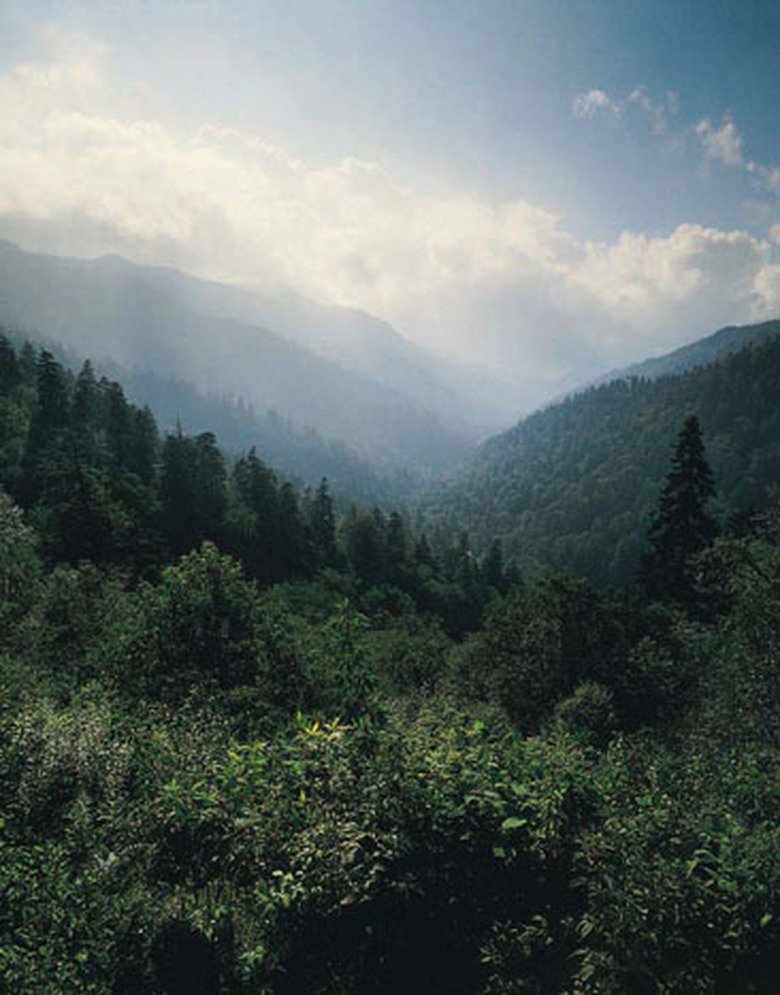What Are The Types Of Rocks Found In The Appalachians?
The Appalachian mountain range extends from the Canadian island of Newfoundland to the foothills of central Alabama and Georgia. The system of mountains, ridges, hills and plateaus covers an area 1,500 miles long and 90 to 300 miles wide. Scientific study of Appalachian rock types has revealed the age and formation processes of the ancient mountain chain.
Appalachian Geology
Appalachian Geology
The Appalachians are some of the oldest mountains in the world. The rounded shape of the mountain peaks results from millions of years of erosion. An examination of the exposed rocks in the Appalachians reveals a mix of marine sedimentary rocks, some volcanic basaltic rocks and pieces of the ocean floor that predate the formation of the North American continent. The rocks were formed by ocean sediment deposits and volcanic eruptions of lava that cooled into igneous rocks.
Tectonic Uplift
Tectonic Uplift
According to the United States Geological Service, the Appalachians uplifted around 480 million years ago from tectonic plate collisions. Rocks at the heart of the mountains are over a billion years old. The rocks, originally laid down in elongated horizontal layers, were uplifted and folded by tectonic crustal plate collisions. The layers of Paleozoic-age sedimentary and volcanic rock are more than 32,800 feet thick in some exposed areas of the Appalachian Mountains, much thicker than the rest of the country.
Sedimentary and Igneous Rocks
Sedimentary and Igneous Rocks
Much of the rock underlying the Appalachians is sedimentary. Sediment from nearby eroding hills flowed into a basin called the Ocoee. Over millions of years, sediments deposited and transported by water compressed into the high-calcium limestone, dolomite and silica bedrock of the southern Appalachians. Minerals such as pyrite and metallic copper may be found within the sedimentary rock. Igneous Appalachian rocks include pegmatite, alaskite, mica and feldspar formed from molten magma. Rocks of dunite, and olivine containing peridotite are found in the southern ranges.
Metamorphic Rocks
Metamorphic Rocks
The northern Appalachian ranges in New England and Canada consist mostly of crystalline metamorphic rocks with some igneous intrusions. The metamorphic rocks are the result of changes brought about by intense heat and pressure deep below the Earth's surface. The eastern Piedmont plateau region contains dome-shaped granite intrusions and deposits of greenschist, biotite shists and slate. Narrow bands of serpentine are found throughout the Piedmont. The Blue Ridge mountains are marked by remnants of unmetamorphosed sedimentary rock.
Cite This Article
MLA
Whitmer, Phil. "What Are The Types Of Rocks Found In The Appalachians?" sciencing.com, https://www.sciencing.com/types-rocks-found-appalachians-8612853/. 24 April 2017.
APA
Whitmer, Phil. (2017, April 24). What Are The Types Of Rocks Found In The Appalachians?. sciencing.com. Retrieved from https://www.sciencing.com/types-rocks-found-appalachians-8612853/
Chicago
Whitmer, Phil. What Are The Types Of Rocks Found In The Appalachians? last modified August 30, 2022. https://www.sciencing.com/types-rocks-found-appalachians-8612853/
